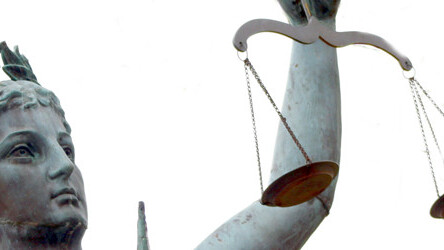
The potential legal concerns for users of the popular sharing site Pinterest are getting a lot of attention, from the lawyer who publicly renounced her “pinning” to the suggestion that a one-word change could help mitigate legal issues.
Much of the conversation hinges on the issue of Fair Use, which determines whether or not a copyrighted work can be used, copied, or distributed by someone other than the copyright holder. In the case of Pinterest, it is whether or not a copyrighted image can be pinned and repinned on the social site. Pinterest’s Terms of Use clarifies that the responsibility lies solely with the user, so here are some things to consider when you pin that next inspiring photograph.
The Fair Use Doctrine, incorporated into the Copyright Act of 1976, takes into consideration four factors when determining if the copyright on a work has been infringed:
- the purpose and character of the use, including whether such use is of a commercial nature or is for nonprofit educational purposes;
- the nature of the copyrighted work;
- the amount and substantiality of the portion used in relation to the copyrighted work as a whole; and
- the effect of the use upon the potential market for or value of the copyrighted work.
The First Factor and “transformation”
Under the first factor, parody and critical treatments of a work are often favored as transformative. Though that word is quickly becoming the rallying cry of the infringing parties, what constitutes “transformative” is constantly up for debate (or lawsuit). In Perfect 10 v. Amazon, the court ruled that miniaturized images used in a Google Image search engine constituted fair use. The incorporation of the images into a search engine transformed the genre along with the scale of the original. This precedent might help position Pinterest as a kind of “interest engine” in a way similar to Google’s search engine.
In Feist v. Rural, which addressed the copyright of information or facts, the Supreme Court ruled that creativity was necessary to copyright something because the U.S. Constitution:
“mandates originality as a prerequisite for copyright protection. The constitutional requirement necessitates independent creation plus a modicum of creativity.”
To copyright a work it must have enough creativity “to transform mere selection into copyrightable expression” so it could be argued that for the copyright infringement to be deemed fair use, it should also have this level of creativity. This begs the question if the simple act of repining and commenting on a work can be considered creativity. It seems obvious that simply commenting “I love this” or “just had to share” does not transform the work, and that’s just one argument that would need to be heard in a lawsuit.
Also related to the first factor, quoting excerpts from a book is fair use if the purpose is to write a critical or parodic review. Therefore, a Pinterest user who wrote a critical paragraph on an image might be able to argue similarly. But while a person could argue the “transformative” value of commenting on an image, actually weighing the fourth factor of fair use is where the gloves come out.
The Fourth Factor and money
The fourth factor for determining fair use is about money, or more specifically, the potential loss of money due to copyright infringement. Consider the situation where a photographer makes a livelihood from selling images online and those images suddenly start appearing on Pinterest without consent or possibly without his or her knowledge. Arguments can be made that the photographer would get more traffic and attention, but that relies on proper attribution, which may not necessarily occur.
It could also be argued that a photographer should watermark his or her images to avoid misattribution, but that is like telling a painter to stick a post-it note in the middle of a canvas saying “this is mine.” However, even if both of those things occurred, this photographer who wants people to buy his or her unique image is now faced with a market saturation of his or her own product, and the demand to purchase the image could go down. Similarly, misattribution or lack of attribution dilutes the brand of that artist, which could devalue the work. Either way, that artist did not make the choice to have his or her image used, whether it is attributed or not, and the argument for damages could be made.

One way to ease some of the legal anxiety over Pinterest would be for artists to state clearly on their original sites if they are “Pinterest-friendly” with their parameters for sharing, including attribution. People will still do whatever they want, but that kind of clarity regarding copyright expectations promotes awareness for the average person who is sharing an artist’s work.
Many artists have a desire for more visibility and Pinterest may be great for that. But for most struggling artists, a return on their investment of time, energy, and creativity is necessary to pay the rent. Quite simply, the need for compensation might trump the desire for visibility. Those artists have the right to make that choice for themselves, and some of them may turn to lawsuits to make the case.
Get the TNW newsletter
Get the most important tech news in your inbox each week.




